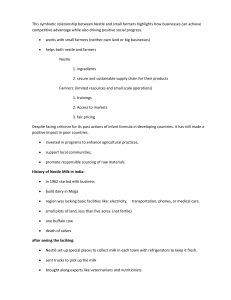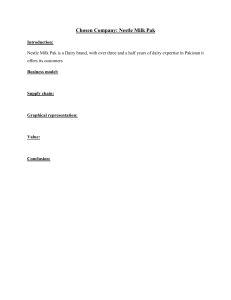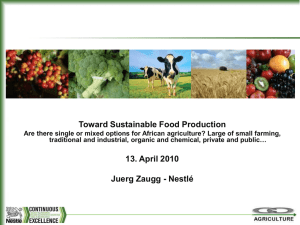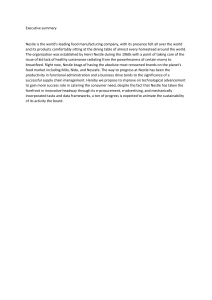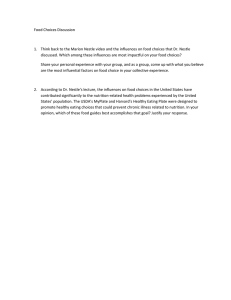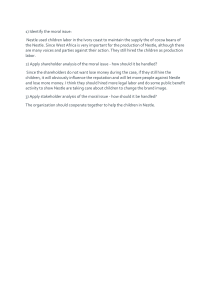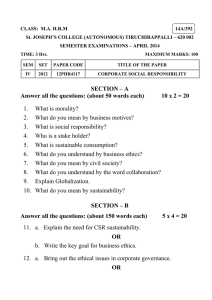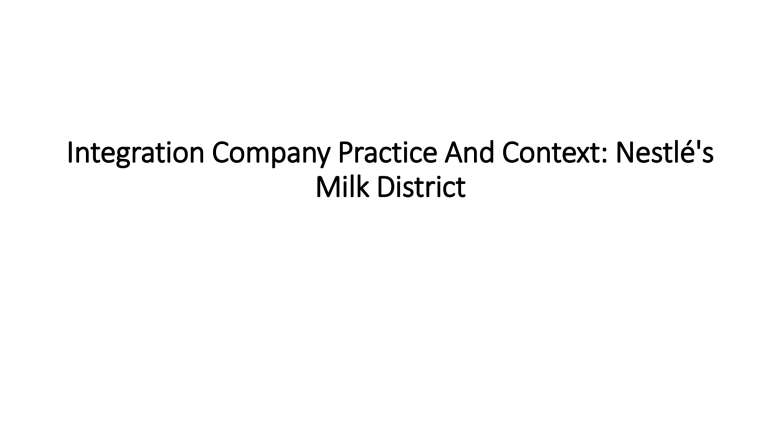
Integration Company Practice And Context: Nestlé's Milk District how Nestle achieved competitive advantage while also driving positive social progress Cont: • works with small farmers (neither own land nor big businesses) • helps both nestle and farmers Nestle 1. ingredients 2. secure and sustainable supply chain for their products Famrers: (limited resources and small scale operations) 1. trainings 2. Access to markets 3. fair pricing How Nestle has a positive image even after criticism? • invested in programs to enhance agricultural practices, • support local communities, • promote responsible sourcing of raw materials. History of Nestle Milk in India: • in 1962 started milk business • build dairy in Moga • region was lacking basic facilities like: electricity, transportation, phones, or medical care. • small plots of land, less than five acres. (not fertile) • one buffalo cow • death of calves Action of Nestle after examining this lacking? • Nestlé set up special places to collect milk in each town with refrigerators to keep it fresh. • sent trucks to pick up the milk • brought along experts like veterinarians and nutritionists. • provided medicine • training to help sick animals • how to improve their cows' diet (milk quality) Now farmers could afford to dig deep wells for irrigation, which not only helped their cows but also increased their crop harvests, making life better for them. Change in Moga: • • • • • earlier 180 farmers supplied milk now getting from 75000+ farmeers in Moga decreased death rate by 75% higher pay than govt decided competing daries and milk factories have opened. Now Moga has higher standards of living than other regions: • 90% homes with electricity and telephones • primary and secondary schools • number of doctors increased Nestle's successful model: • Collection points, • providing training, • introducing advanced technology. Strategy replicated such as Brazil, Thailand, and China, benefiting both Nestlé and local communities. Why CSR is difficult to find here? • where the business ends and the social good begins. • example: working with farmers to get ingredients • social benefits such as improved healthcare, education, and economic development. ( positive social impact) By investing in local infrastructure and sharing knowledge and technology, Nestlé not only ensures it has what it needs to make money but also helps improve healthcare, education, and the economy in those places Organizing CSR: • Good Intentions and Leadership (help society) • Changes Needed • Paying attention to social Issues • Making Social Responsibility a Core Part of Business • Changing Approach This means they need to move away from just trying to have a good image and focus on making real changes that matter. Importance of decision making in CSR 1. Strategic Decision Making: • which social issues to address. 2. Short-term Pressures vs. Long-term Investment: • it can be challenging for company. • while long term investments get their future competitiveness. (sustained growth and success) 3. Creating Shared Value: • not only benefit society but also enhance the company's competitive positioning. • can align their social impact efforts with their business goals. (benefits for both stakeholders and the organization)
